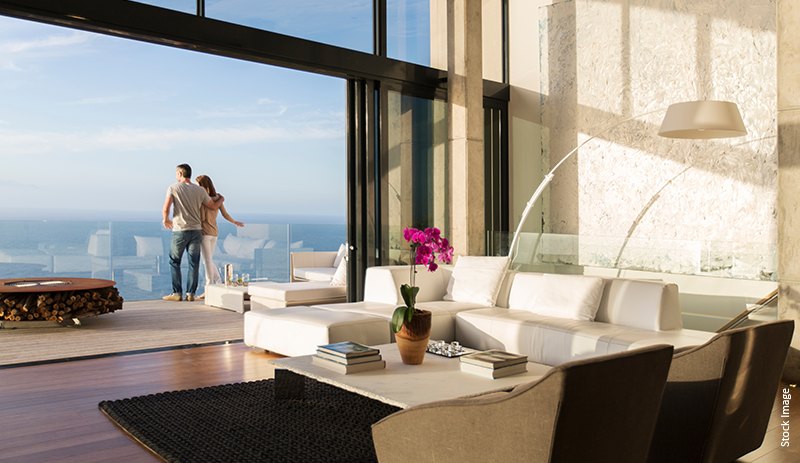14 February, 2024
4 mins read

The pursuit of luxury living has long been a driving force for home buyers. Opulent houses symbolise success and achievement. The allure of a lavish house that can seamlessly accommodate one's possessions while providing an ambience of comfort and grandeur has been the traditional definition of the aspirational dream home.
However, as the world stands at the crossroads of evolving values and priorities, a discernible shift is underway. Today, the aspirations of home buyers are transforming and moving from the conventional notions of luxury to a new paradigm – wellness living.
Find out more about this shift, what is driving it, and its impact on residential real estate.
Individuals are increasingly recognising the profound impact their living spaces can have on their overall health and happiness. Whether it has been due to the 2020 COVID-19 pandemic, the increase in lifestyle diseases, or the sedentary routine most people are stuck with, health is becoming a major concern for all age groups.
The modern life of today is characterised by hectic schedules and high-stress levels. As a response, people are increasingly recognising the need for homes that serve as sanctuaries that promote relaxation and serenity.
There is a growing global consciousness about the importance of health and well-being. Individuals are becoming more mindful of their physical, mental, and emotional health and seeking environments that support a balanced and healthy lifestyle.
The definition of a successful and fulfilling life has also evolved. There was a time when having a big home was the prime indicator of success. However, people no longer use material possessions as the sole measure of success. Instead, there is a greater emphasis on experiences, relationships, and personal well-being.
Here are several ways in which the shift from luxury lifestyle to wellness living has impacted residential real estate:
Residential properties are being designed with sustainability in mind. Green building practices, such as energy-efficient features, eco-friendly construction materials, and renewable energy sources, are becoming integral to real estate development.
The emphasis on sustainable construction reduces the environmental impact and contributes to creating healthier living environments for occupants.
Smart homes are not just a new technology fad. They play an indispensable role in promoting wellness living. Incorporating smart technologies has enhanced the health and comfort of residents.
Features like air purifiers, smart Heating, Ventilation, Air Conditioning (HVAC) systems, and water purification systems have immensely improved indoor air quality and overall health.
Home automation systems allow residents to monitor and control various aspects of their homes to promote energy efficiency and a healthier living environment.
Residential areas now prioritise green spaces, parks, and recreational areas. Several research studies show that access to nature can positively impact one’s mental well-being.
Developers are incorporating these elements to enhance the overall quality of life for residents. Amenities like walking trails, community gardens, and outdoor fitness areas contribute to a more active and health-conscious lifestyle.
Residential complexes are equipped with wellness-focused amenities, including gyms, yoga centres, meditation spaces, and community halls. These facilities encourage residents to engage in physical activities while fostering community and individual well-being. Such amenities reflect a holistic approach to residential living that goes beyond the home's physical structure.
Modern homes prioritise ample space and ventilation. Open floor plans, large windows, and well-designed layouts contribute to a sense of spaciousness. Proper ventilation maintains indoor air quality and prevents the buildup of pollutants.
These features contribute to the overall health and comfort of residents. New luxury residential properties place a premium on natural light. Exposure to natural light has been linked to improved mood, better sleep, and increased productivity.
Large windows maximise daylight exposure. Not only do these enhance the aesthetic appeal, but also promote the well-being of occupants.
Indoor gardens are becoming increasingly popular in residential real estate, both in houses and community areas. Indoor gardens not only provide visual value, but they also improve occupants' overall well-being.
They foster a connection with nature, enhance air quality, and allow residents to participate in therapeutic activities such as gardening and meditation. The presence of indoor greenery is consistent with the larger trend towards wellness living, promoting a healthier and more balanced lifestyle for everyone in the community.
The shift to wellness living has reshaped residential real estate. Builders and buyers are increasingly siding with sustainable projects that can contribute to one’s health and peace of mind. While luxury may not have taken a complete backseat, it has certainly been overtaken by a holistic approach to well-being.
Realtors like Piramal Realty are incorporating these holistic needs in their offerings, like the Piramal Aranya. Take a virtual tour of Piramal Aranya to see their luxurious and sustainable homes focused on improving one’s wellness.
Disclaimer- This article is based on the information publicly available for general use as well as reference links mentioned herein. We do not claim any responsibility regarding the genuineness of the same. The information provided herein does not, and is not intended to, constitute legal advice; instead, it is for general informational purposes only. We expressly disclaim /disown any liability, which may arise due to any decision taken by any person/s basis the article hereof. Readers should obtain separate advice with respect to any particular information provided herein.
13 December, 2023
05 June, 2023